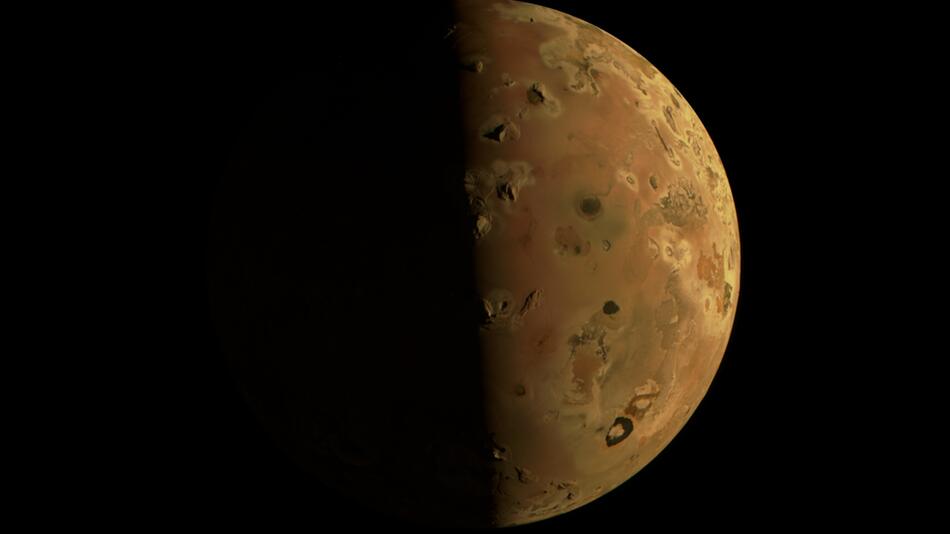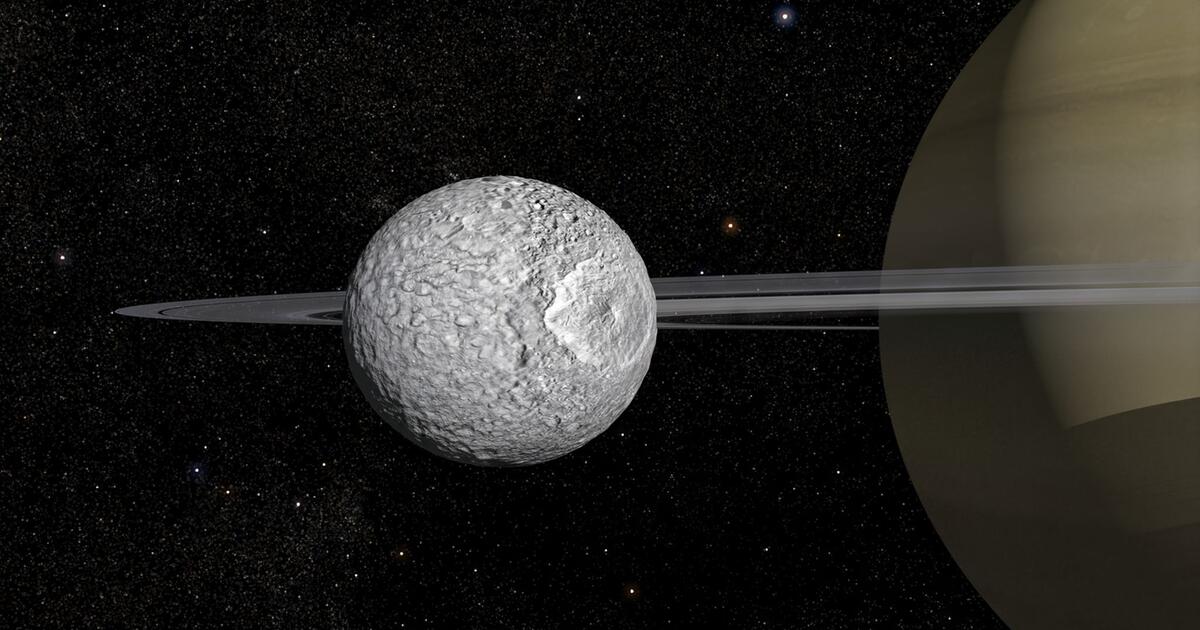space
Updated February 8, 2024 at 3:10 p.m
A research team has made a surprising discovery on Saturn's hazy moon Mimas: a deep ocean. This discovery changes the view of other smaller celestial bodies.
About 20 to 30 kilometers below the icy surface of Saturn's small moon Mimas lies a global ocean of liquid water. An international research team came to this surprising conclusion from analyzing ancient data from the American Saturn probe Cassini. Until now, experts assumed that the interior of the celestial body was solid. What is also surprising is that the oceans are astronomically young: they formed a maximum of 25 million years ago, Scientists say in the magazine “Nature”.
Saturn's moon Mimas – an unlikely place for the ocean
“Moons with a global circumference under a thick layer of ice are very common objects in the solar system,” explain Valery Linney of the Sorbonne University in France and his colleagues. These oceans reveal themselves through structures on the surface that arise from cracks and fissures in the ice sheet. Examples include Jupiter's moon Europa and Saturn's moon Enceladus.
Saturn's moon Mimas, with a diameter of about 400 kilometers, does not show anything like this: its surface is full of ancient craters. Herschel Crater is particularly eye-catching, with a diameter of 139 kilometers. That's why Mimas is “the most likely place to look in the ocean,” Lainey said.
Measurements by the Cassini probe, which orbited Saturn from 2004 to 2017 and also explored its rings and moons, showed that Mimas sways slightly back and forth as it rotates. This phenomenon, called libration, could indicate the presence of a “rough” ocean inside the Moon. However, since there were no signs of this on the surface, astronomers preferred a different explanation: the solid core of the Moon was slightly distorted, i.e. stretched, due to Saturn's gravity.
The water is probably about half the volume of Mimas
However, such a distorted core should affect the Moon's elliptical orbit around Saturn – the orbital ellipse should exhibit a slight rotation, called precession. Linney and his colleagues looked for this effect in Cassini data. The biggest surprise for researchers: If we assume that Mimas is a solid and frozen celestial body, it is not possible to reconcile measurements of the Moon’s precession and the movement of precession.
The only solution consistent with all the data is to assume the existence of a global liquid ocean beneath the frozen surface. According to researchers' calculations, its depth is about 70 to 80 kilometers. “This means that about half the volume of Mimas is made up of liquid water,” Lenny asserts.
But why are there no signs of the ocean on the moon's surface? According to Lenny, the orbit of Mimas also provides an answer to this question – and again a surprising answer: such a large circumference causes the elliptical orbit to become circular in a very short time. As the team's calculations show, the ocean could be a maximum of 25 million years old. According to researchers, this period of time is not long enough to leave traces on the surface.
Linney and his colleagues' discovery will likely change the way planetary scientists view the many small icy moons of the large planets in our solar system. There may be other large oceans hidden beneath the surfaces of some of these inconspicuous celestial bodies. (Rainer Kaiser, DPA/General Staff)

NASA's Juno probe passed by Jupiter's moon Io on February 3. The space probe approached the celestial body at a distance of 1,500 kilometers. NASA is now releasing its first stunning images.


“This is how the editorial team works“It teaches you when and what we report bugs, how we handle bugs and where our content comes from. When reporting, we adhere to guidelines Journalism Trust Initiative.

“Prone to fits of apathy. Zombie ninja. Entrepreneur. Organizer. Evil travel aficionado. Coffee practitioner. Beer lover.”







More Stories
Data Leakage: Android TV can expose user's emails and files
How did life begin on Earth? Munich researchers find important clues
The “One-Man-Show” Next-Gen Update shows how to please players